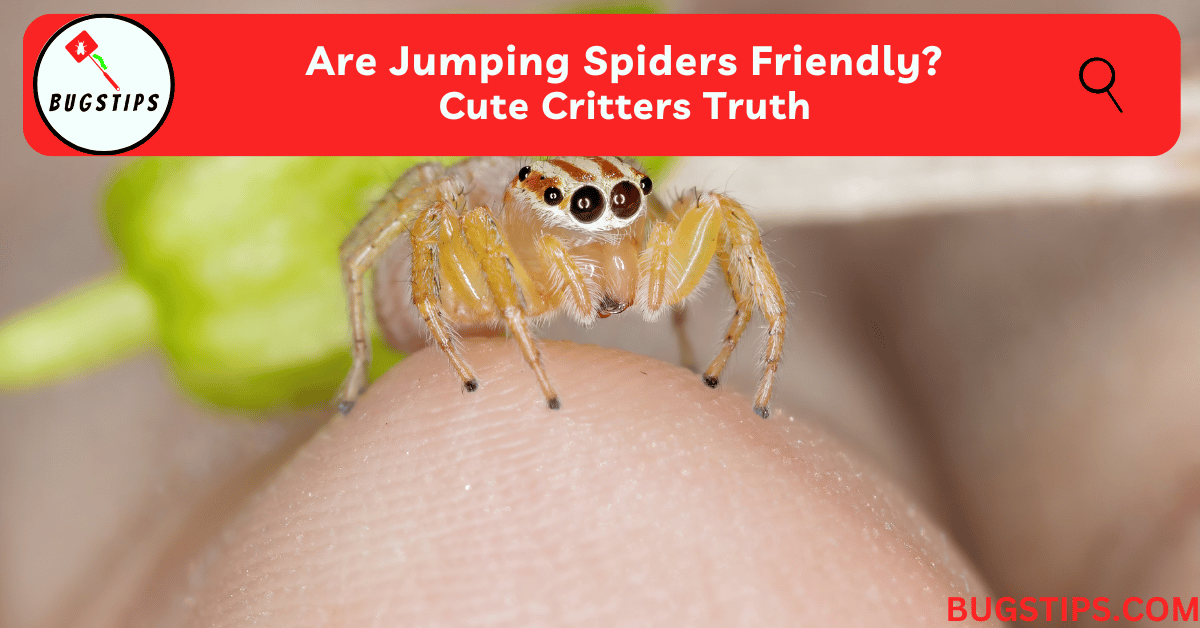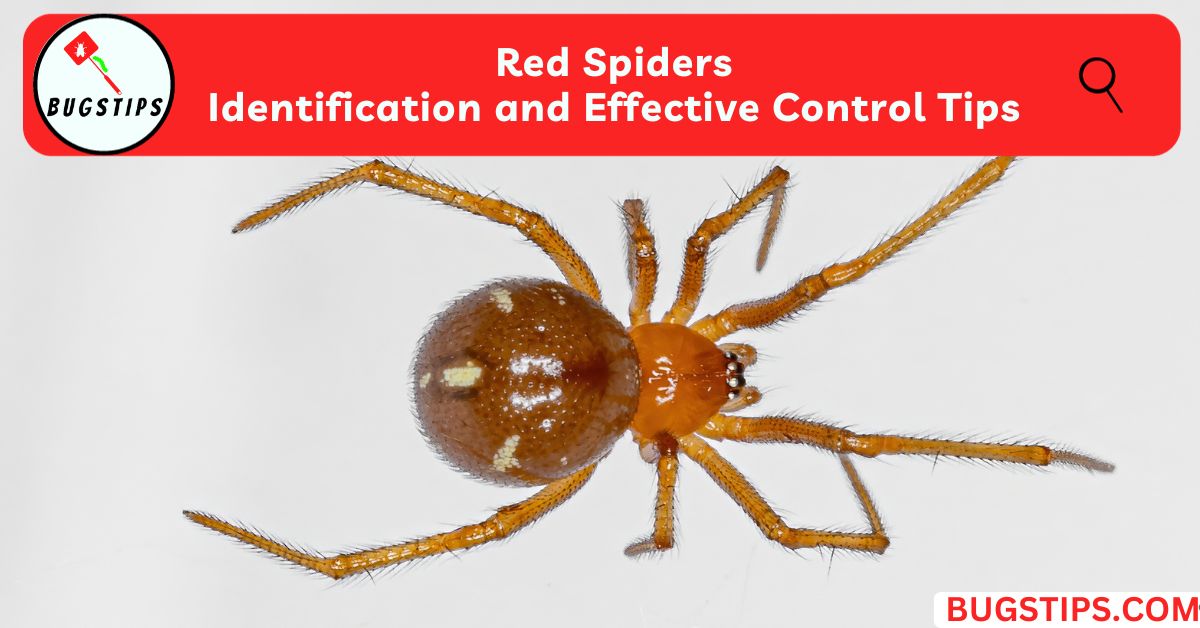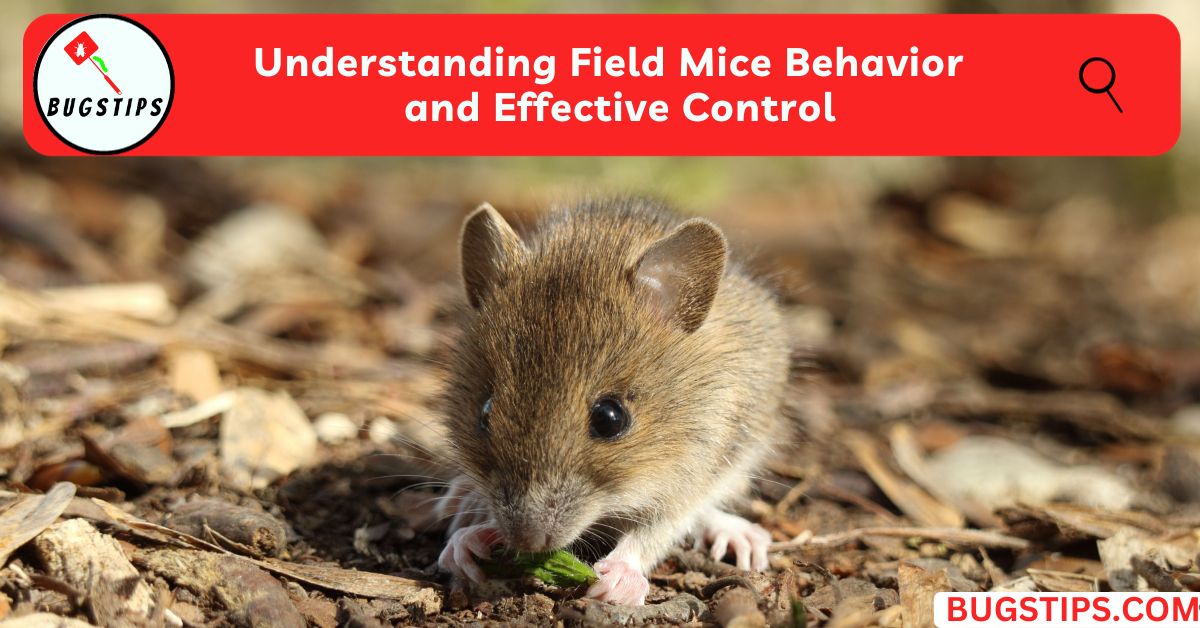This post may contain affiliate links which means as an Amazon Associate, this site may earn a small commission on qualified purchases made through links at no extra cost to you. Learn more on Affiliate Disclosure
Jumping spiders are tiny eight-legged creatures that spark curiosity in many arachnophiles.
With their front-facing eyes that seem to gaze at humans, and their tendency to remain still when approached, jumping spiders exhibit behaviors that make us wonder – are jumping spiders friendly?
Unlike spiders that passively create webs, jumping spiders are active hunters who stalk and pounce on prey.
Their unique hunting strategy coupled with their seeming lack of fear towards humans compels many to ask: Are jumping spiders more “friendly” than other spiders?
In this article, we’ll explore common jumping spider behaviors to uncover if they indicate friendliness or are simply survival instincts.
Do jumping spiders wave in a show of curiosity or as a maneuver to hunt? Let’s take an objective look at the reasons behind the debate on whether these tiny spiders are indeed friendly or not.
Are Jumping Spiders Friendly
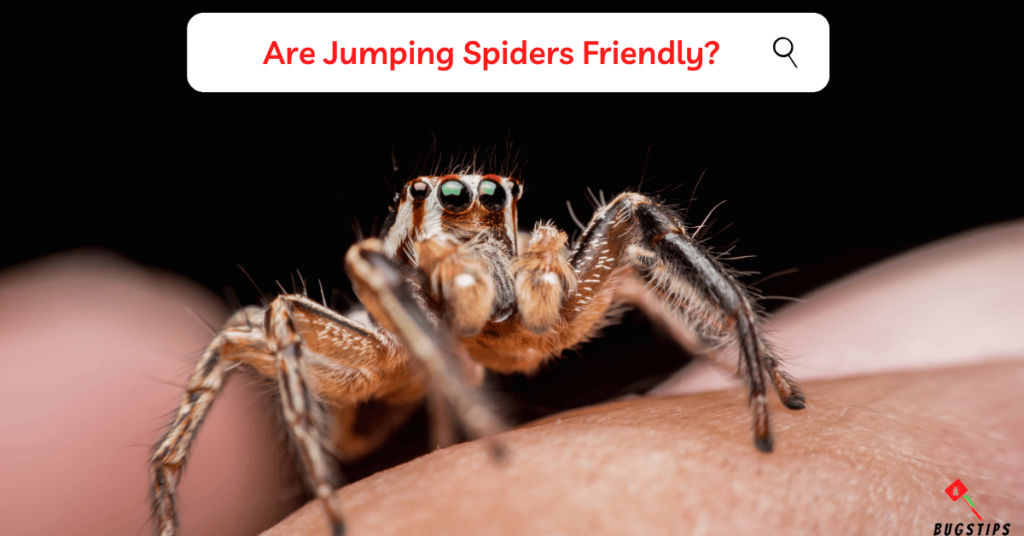
Jumping spiders often exhibit behaviors that make them seem friendly compared to other spiders.
For example, they have excellent vision and will turn to watch as a human approaches. Their front-facing eyes give them the appearance of observing humans.
However, most arachnologists believe jumping spiders do not demonstrate behaviors out of friendliness, but rather as survival instincts.
While jumping spiders seem inquisitive and unafraid of humans compared to other spiders, they are not objectively friendly. Their behaviors are driven by natural instincts to hunt prey and avoid threats.
Jumping spiders’ tendency not to flee from humans and their apparent lack of fear does not necessarily indicate friendliness.
Rather, these behaviors allow them to closely monitor potential threats and retreat if necessary.
You May Also Like – Are Banana Spiders Poisonous?
Are Black Jumping Spiders Friendly?
Black jumping spiders, such as the bold jumping spider and the elegant black jumping spider, share many behaviors with their more colorful cousins.
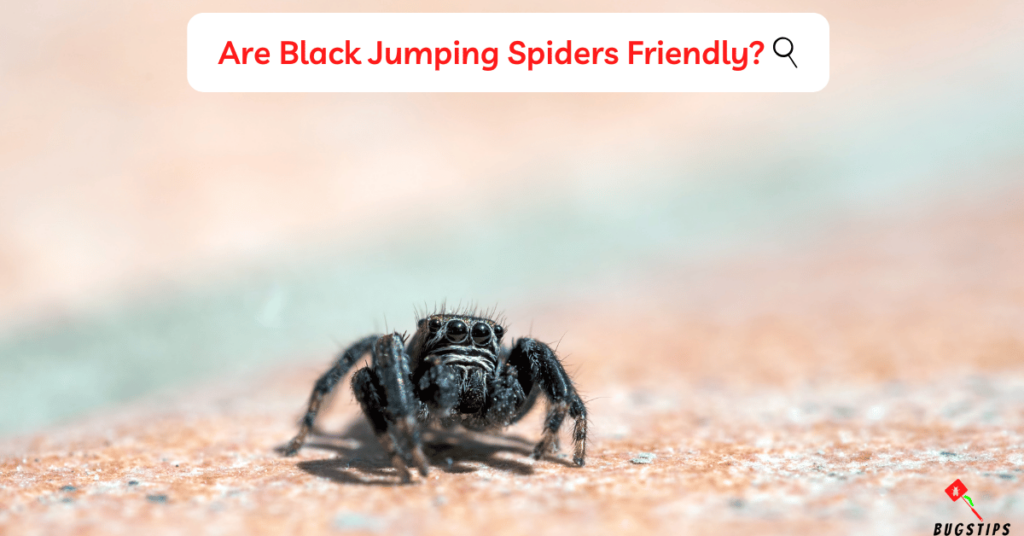
Some may find their dark coloration intimidating. However, black jumping spiders are not overtly aggressive and will only bite if severely provoked.
Like other jumping spiders, black jumping spiders’ boldness stems from their excellent vision and agility, allowing them to observe threats while still being able to rapidly escape confrontation.
Their curiosity and willingness to allow humans to approach also facilitate monitoring potential predators.
While their darker hue may give an ominous impression, black jumping spiders do not differ significantly from brighter jumping spiders when it comes to interactions with humans.
You May Also Like – Do Wolf Spiders Make Webs?
How Do Jumping Spiders React to Humans?
Jumping spiders respond to humans with a mixture of inquisitiveness and caution.
Their keen eyesight spots our looming presence from a distance, and they orient themselves to evaluate whether we’re friend or foe.
With their outsized primary eyes fixed on us, they seem to study our every move and mannerisms with rapt attention.
At first, jumping spiders appear unsure of what to make of the giant beings gazing back at them. They may hold their ground rather than scurrying away right off the bat.
Slow, non-threatening movements on our part might even pique their curiosity enough to prompt a closer inspection.
However, most retain a wariness that keeps them just out of reach.
This delicate dance of approach and retreat continues until something triggers their sense of impending danger.
An abrupt movement or swipe of a human hand is often enough to end the encounter, sending the jumping spider beating a hasty retreat.
While willing to tolerate benign interaction, jumping spiders make it clear through their guarded reactions that trust in humans only goes so far.
You May Also Like – Zombie Spiders | The Creepy Truth
What is the Friendliest Jumping Spider?
With over 5,000 diverse jumping spider species worldwide, some have gained reputations for being more docile and interactive with humans than others.
Here are a few of the most well-known “friendly” jumping spiders.

Phidippus regius (Regal Jumping Spider)
- The regal jumping spider is a recommended starter species for novice arachnid enthusiasts.
- They are known for being relatively easy to handle and possessing an energetic but balanced demeanor.
- Regal jumpers are described as curious explorers who will watch and approach humans willingly.
- Their comfort in being held allows them to become familiar with their owners.
Cosmophasis umbratica
- This petite Southeast Asian jumping spider species measuring only 5-6 mm long has generated buzz for its cute appearance and complaisant attitude around people.
- Cosmophasis umbratica exhibits low skittishness and seems drawn to investigating any hand or object placed in its enclosure.
- Its tiny size and non-confrontational nature are noteworthy for a jumping spider.
Tan Jumping Spider
- The tan jumping spider’s mellow temperament and inquisitiveness have earned it a reputation as a friendly species ideal for handling.
- They enthusiastically explore their environment and human caretakers without much timidity.
- Their hardiness, small size, and gentle demeanor add to their popularity.
Phidippus audax (Bold Jumping Spider)
- One of the most common jumping spiders found in North America, P. audax lives up to its “bold” moniker with its intrepid nature around humans.
- They readily explore human hands and surroundings placed in their enclosure.
- P. audax are also acclaimed jumpers, able to leap up to 10 times their body length.
- Their daring personalities and athleticism make them fun to observe.
While there are many species of jumping spiders, these are some of the friendliest ones that make great pets. Even friendly spiders may bite if they feel threatened, so handling them should be done with care.
You May Also Like – Do Spiders Poop?
Why Do Jumping Spiders Wave At You?
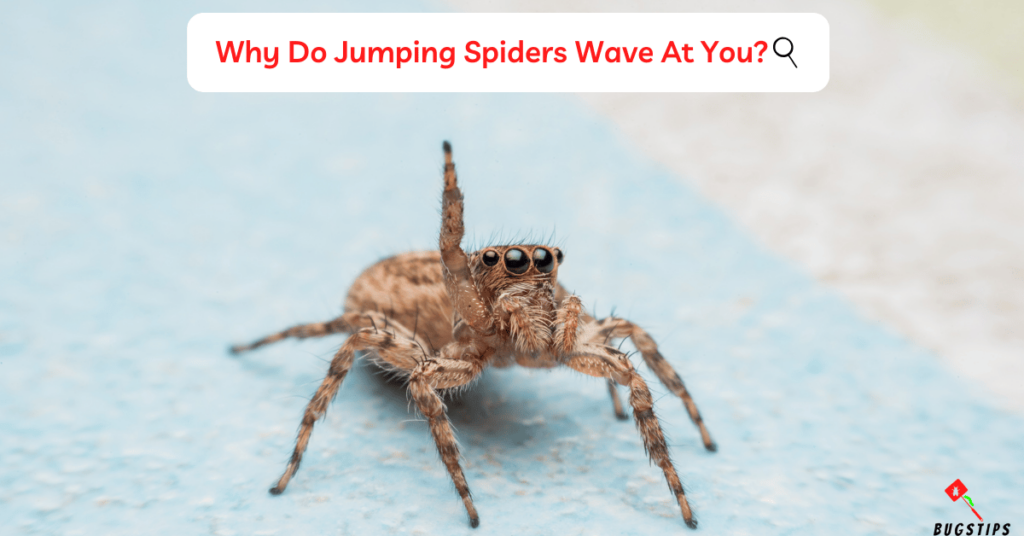
Jumping spiders are often seen holding up and waving their front pairs of legs when a human approaches.
This interesting behavior has led many to believe they are waving a friendly greeting.
However, scientists have found that this leg-waving serves a defensive purpose rather than a social one.
When jumping spiders notice potential threats, waving their front legs adds motion to their bodies, allowing them to blend in with surrounding plants and foliage being moved by wind.
By mimicking swaying vegetation, the waves act as camouflage to avoid detection from predators.
Jumping spiders perform waving motions most frequently when sensing larger animals nearby that could be dangerous.
The waves start off slow and deliberate and increase in speed as the perceived threat escalates.
This suggests the leg motions are meant to distract and confuse predators, not say hello.
So while it may look like jumping spiders are waving a cheerful welcome, they are in fact using rapid leg movements to avoid becoming prey themselves.
This instinctual defensive behavior aids their survival, even if it misleads us into thinking we’re being greeted by these tiny arachnids!
Related Article – Can Spiders See in the Dark?
Is it OK to Hold a Jumping Spider?
Jumping spiders are gaining popularity as pets, partly due to videos showing them perched on people’s hands.
However, is it advisable to hold a jumping spider? There are a few factors to consider.
- First, not all jumping spider species have tolerant temperaments amenable to handling.
- Docile species like the regal jumping spider are more suitable.
- Even within a suitable species, individuals can vary in disposition. So the spider’s comfort level should be gauged before handling attempts.
- Handling sessions should always be brief and gentle.
- Jumping spiders are fragile and can easily become injured if dropped or restrained.
- It’s best to let them walk onto your hand voluntarily versus grabbing them.
- Also, limit handling to reduce stress on the spider.
- Provide a gentle surface in case of falls and wash hands before and after to prevent transferring oil and dirt.
Never handle a jumping spider preparing to molt or with an egg sac, as disturbance can be deadly. With the proper calm species, short sessions, and gentle handling, holding a jumping spider can be safe. Knowing your individual spider's personality is key to minimizing potential risks.
Related Article – Should You Squeeze the Pus Out of a Spider Bite?
How Do You Get a Jumping Spider to Trust You?
While jumping spiders have no true capacity for complex emotions like “trust,” it is possible to get individuals accustomed and desensitized to a human caretaker through the following methods.
- Move slowly and predictably when interacting with or handling the spider. This gives them time to recognize you are not presenting an immediate threat.
- Allow the jumping spider to approach you first before initiating contact. Forcing interactions can cause them to withdraw defensively.
- When handling, keep the spider close to the ground or surfaces to prevent potentially frightening free falls.
- Avoid touching sensitive body parts like the abdomen. Handle gently overall to not cause injury.
- Provide regular positive reinforcement through feeding, misting the enclosure, etc. Associating you with resources helps the spider become receptive.
- Limit disturbance during vulnerable times like molting or when they have an egg sac. Too much interference during critical moments may break trust.
- Be attentive and consistent in your interactions. Jumping spiders can learn to recognize individual humans.
With routine gentle handling and care, jumping spiders can become habituated. But building true "trust" requires complex emotional cognition absent in spiders. Keeping interactions low stress is the best way to earn their tolerance.
You May Also Like – Does Lavender Repel Spiders?
What Should I Do If I Find a Jumping Spider in My Home?
As jumping spiders take up residence in homes, you may encounter one of these tiny arachnids darting across your floor or walls.
While their sudden appearance can startle, jumping spiders are harmless to humans. So what should you do if one turns up in your living space?
Resist the urge to immediately smash the jumping spider. They do not spread disease or infest homes in large numbers.
In fact, jumping spiders prey on pest insects like flies, mosquitoes, and roaches. They can offer free pest control!
Gently catching the spider in a cup or jar is the ideal solution. Slide paper or cardboard underneath, then release the spider outside. This humane approach lets the jumper go on its way while removing it from your home.
You can also simply leave the spider be, especially if sightings are rare. Jumping spiders naturally seek isolated, undisturbed spots like corners of ceilings or wall crevices. As long as populations don’t explode, a few resident jumpers do no harm.
If after observation, you find yourself charmed by the jumping spider’s antics and personality, you may opt to intentionally keep it as a pet!
Jumping spiders require only simple enclosures similar to those used for insects, along with regular misting and feeding on live prey like fruit flies or crickets.
Just be sure to research proper spider care and take precautions when handling. An impromptu spider encounter can sometimes turn into an enriching introduction to keeping exotic pets!
Related Article – 5 Bugs with Lots of Legs
Final Thoughts
Watching jumping spiders go about their busy lives, it’s tempting to see our own tendencies reflected back – their curiosity, apparent friendliness, and endearing leg-waves pulling at our heartstrings.
As a jumper fan myself, I want to think they enjoy our company!
But we have to remember these behaviors come from instinct, not sentiment. While some species tolerate handling, they’re not driven by affection.
Their wariness and caution are adaptations for survival among giants like us.
Our urge to label jumper behaviors as “friendly” says more about us than them. Of course, that doesn’t mean we still can’t delight in observing their antics up close! For placid species, careful handling can allow brief interactions.
But true spider friendship remains scientifically uncertain. We should appreciate jumping spiders for their resilience and mastery of instinct, not imagined fondness.
And find fulfillment in sharing our world for a moment with our tiny six-eyed, eight-legged neighbors.
You May Also Like – Does Windex Kill Spiders?
FAQs
Why are jumping spiders so friendly?
Jumping spiders seem “friendly” due to behaviors that help them hunt prey and avoid predators, not due to sociability or affection for humans. Their curiosity and tolerance of people are survival adaptations.
Are all jumping spiders friendly?
Yes, the majority of jumping spider species are harmless and friendly towards humans. They pose no real threat and can even be considered beneficial companions.
How do I encourage jumping spiders to stay?
Provide hiding spots, adequate food and humidity, and gentle handling so they become accustomed to you. Limit disturbances and interact slowly so they feel secure.
Are jumping spiders harmful to pets?
Jumping spiders have small fangs unlikely to penetrate pet skin. Still, they will bite if threatened, so keep pets separate. Ensure jumping spiders can’t get free, as they may startle pets.
Resources – (for further reading)
Spider ID – Salticidae (Jumping Spiders) – Spider Identification & Pictures
ScienceDirect – Neurobiology: Jumping Spiders Getting On Board

